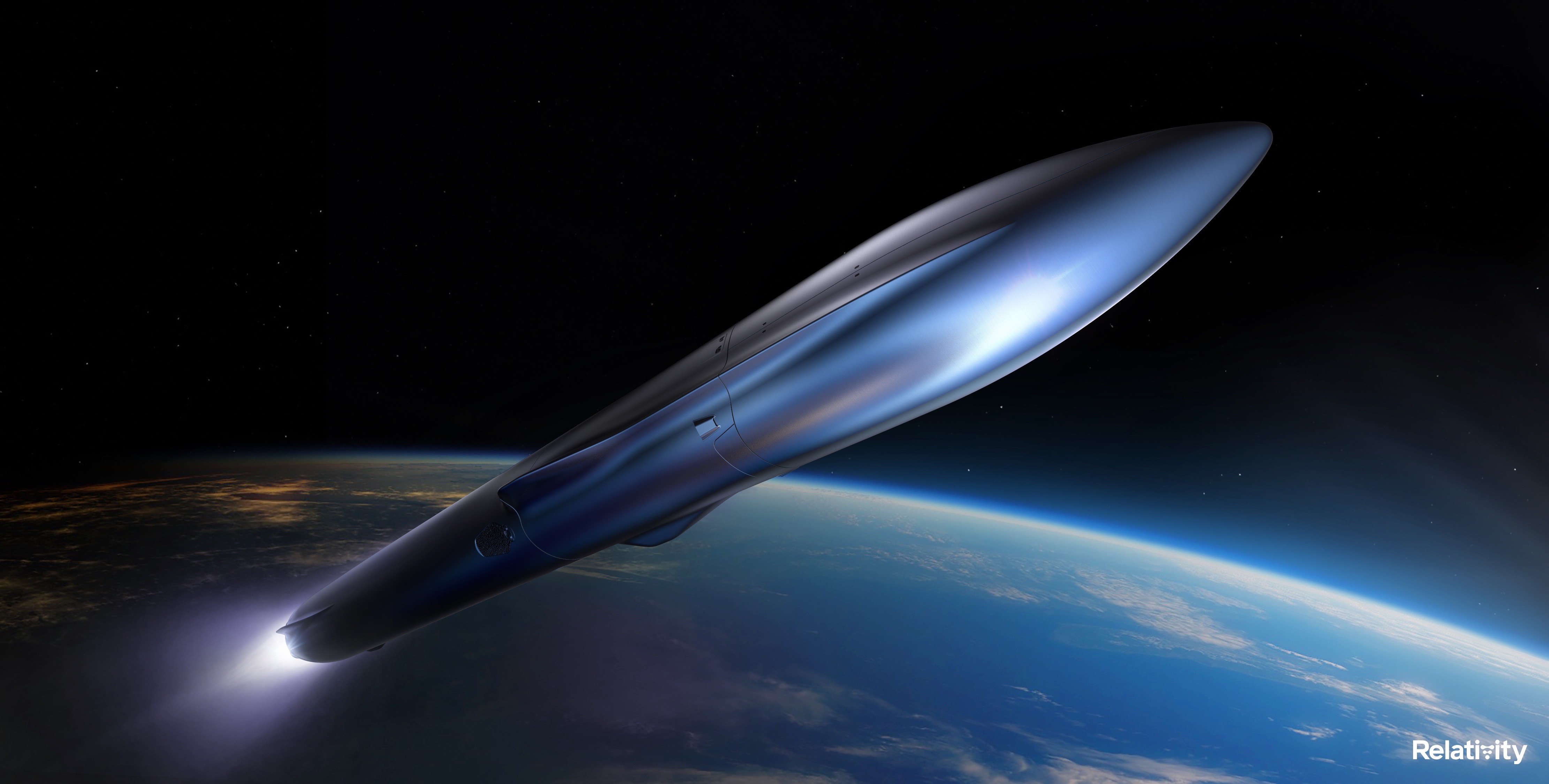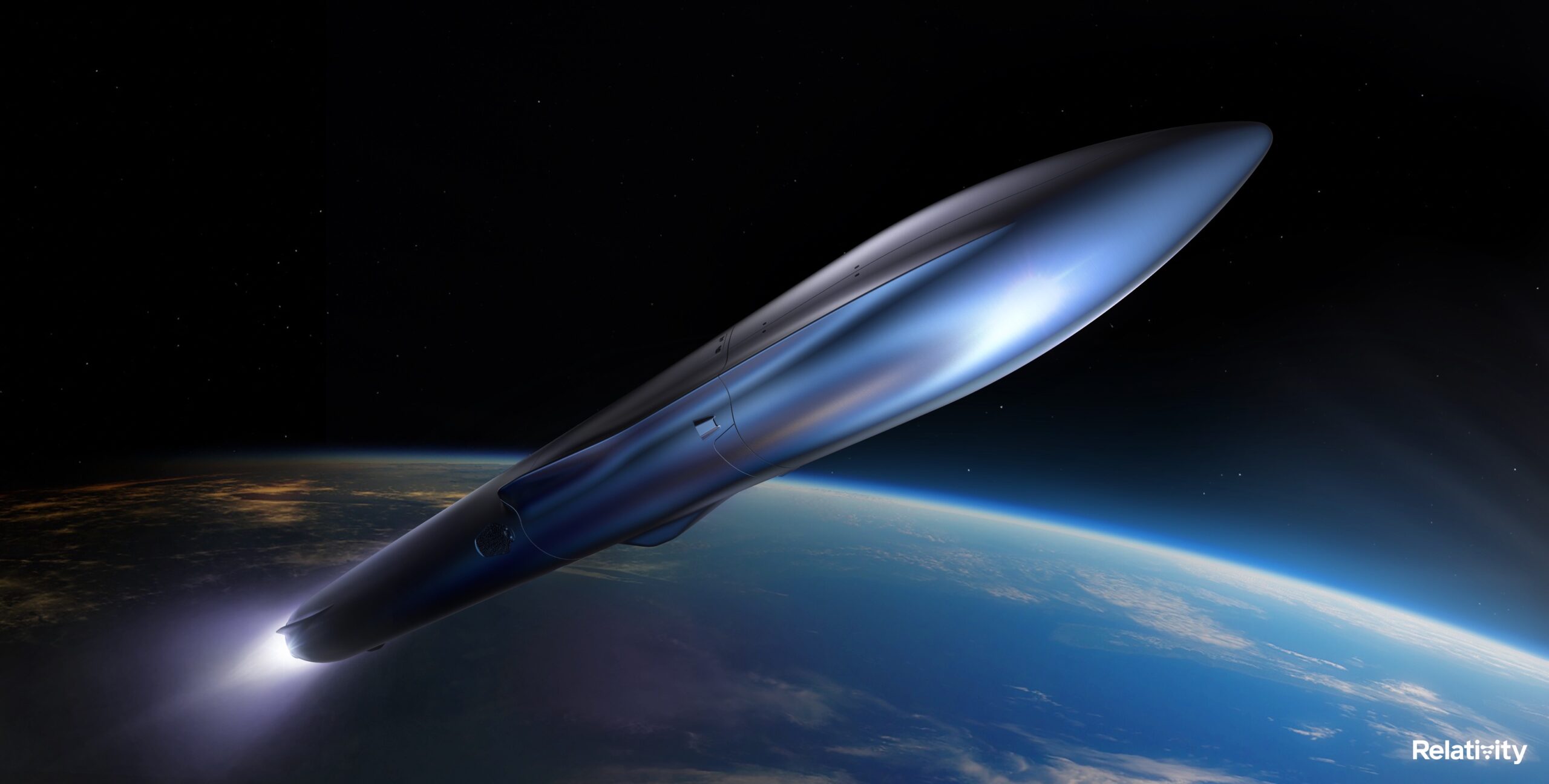
Relativity Space Continues To Make Progress On Terran R
It seems everywhere you look a different company within the space industry is working on a new and ambitious project. Only a few days ago we watched Rocket Lab catch Electron’s booster for the first time. Relativity Space is no exception with the work on not only a unique 3D printing manufacturing process but also the goal to create a fully reusable launch vehicle named Terran R.
Terran R is meant to be a next generation launch vehicle that changes how we access space. While Relativity Space has been primarily focusing on the upcoming orbital test flight for Terran 1, they have still provided a few updates over time. This includes a small update only a few days ago reminding everyone what exactly they are working on.
With the development of Terran R comes work on different engines, manufacturing processes, styles, and much more. All of which could provide Relativity Space with an affordable and fast launch option for different customers around the world. Here I will go more in-depth into recent updates from Relativity, an overview of Terran R, and what exactly makes the rocket so special.
Recent Update

Relativity Space has been staying busy as they continue to work and progress on different projects. This includes Terran 1 with the upcoming first orbital test flight and Terran R, a next generation launch vehicle of the future. Only a few days ago Relativity provided a rare update on Terran R. Specifically, on April 26th they tweeted saying, “While we are keeping momentum towards the launch of Terran 1, we are also rapidly iterating on Terran R, with our powder bed fusion technology. Terran R will be outfitted with seven 3D-printed Aeon R rocket engines capable of 302,000 lb. thrust each.” Relativity Space’s engines, Aeon 1, Aeon R and Aeon Vac, are 3D-printed, enhancing mission reliability by reducing part count in engine combustion chambers, igniters, turbopumps, reaction control thrusters, and vehicle pressurization systems. All of which use propellants of the future, such as liquid oxygen plus liquid natural gas. Which they point out are not only the best for rocket propulsion, but also the easiest to eventually make on Mars. To date, Aeon has completed over 500 test fires. Terran R is expected to have a big impact on Relativity’s future plans. The company vision involves a future where interplanetary life fundamentally expands the possibilities for human experience. In realizing this audacious vision, its long-term goal is to upgrade humanity’s industrial base on Earth and on Mars. They believe in a more inspired future with people thriving on Earth and on Mars. In the early days of settlement, intelligent automation and lightweight, compact 3D printing are fundamental technologies needed to quickly establish a new society with scarce resources.
This all relates back to the recent tweet from Relativity about progress on Terran R. Included with the tweet were multiple photos highlighting some of the different aspects the company is working on. This tweet comes in addition to a few others over the past few months. In late 2021 Relativity tweeted about Terran R mentioning, “Check out the latest timelapse of our Terran R test article, a path-finding prototype to help our team better understand the structure and performance of large-scale printing a.k.a additional proof that additive manufacturing really works!” This was an especially interesting update as it showed a timelapse of the printing process for Terran R. While very early in development, Relativity is making progress one step at a time. Lastly, they provided a bit more information about this test print by saying, “Fun fact, this path-finding prototype is a key element of Relativity’s unique generative design process, which is a design technique inspired by the evolution of structures and shapes that organically occur in nature.” This is just another example of some of the unique design choices that went into Terran R.
Terran R Overview

Now that we know some of the progress Relativity Space has been making on the rocket, we can take a closer look at the design and idea behind Terran R. There are a few key features that Relativity highlights regarding the launch vehicle. The first revolves around a massive reduction in parts. Specifically, the company is confident in creating a 100 times reduction in parts. By fusing 3D printing, artificial intelligence, and autonomous robotics, Relativity is attempting to prin its rockets’ structure and engines, with significantly fewer touch points and lead times, simplifying the supply chain, and increasing overall system reliability. Relativity points out that they can create its rockets, Terran 1 and Terran R, from raw material within 60 days. In terms of capabilities, Relativity’s goal is to create the rocket in its Factory of the Future. Here, Terran R is fully reusable including its engines, first stage, second stage, and payload fairing, and will be capable of launching over 20,000kg to low Earth orbit (LEO) in reusable configuration. They also point out that Terran R will launch from Cape Canaveral, starting in 2024, an ambitious but exciting timeline. The next aspect that was partially mentioned prior has to do with inspiration from nature. Specifically, Terran R has unique aerodynamic features with algorithmically generated and optimized structures. Relativity’s proprietary 3D printing process is enabled by software and data-driven manufacturing, exotic 3D printed materials, and unique design geometries that are not normally possible with traditional manufacturing, driving a faster rate of compounding progress and iteration in the industry. An example could be the grid fins and their unique design. Finally, you have reusability and its purpose. Relativity wants to use Terran R for both next generation satellite launches as well as multi-planetary travel. The idea is for Terran R to provide both commercial and government customers affordable access to space, in LEO and beyond. Terran R helps accommodate the company’s growing pipeline of commercial interest and will also eventually offer customers a point-to-point space freighter capable of missions between the Earth, Moon and Mars. This two-stage rocket stands at 216 feet tall and features a 16-foot diameter and 5-meter payload fairing. Its intended to use 7 Aeon R engines on the first stage and a single Aeon Vac engine on the upper stage. All of which Relativity is working on as we speak.
Relativity Space originally unveiled its plans for this ambitious launch vehicle around the middle of 2021. Here they went a bit more in-depth into the overall idea and plan for the rocket. “From our founding days in Y Combinator just five years ago, we planned on 3D printing Terran 1 and then Terran R – a 20X larger fully reusable rocket – on our Factory of the Future platform,” said Tim Ellis, CEO and co-founder of Relativity. “Today we are one step closer to this goal. Together with our first rocket Terran 1, our second product, Terran R, will continue to take advantage of Relativity’s disruptive approach to 3D printing – reduced part count, improved speed of innovation, flexibility, and reliability – to bring to market the next generation of launch vehicles. Relativity was founded with the mission to 3D print entire rockets and build humanity’s industrial base on Mars. We were inspired to make this vision a reality, and believe there needs to be dozens to hundreds of companies working to build humanity’s multi-planetary future on Mars. Scalable, autonomous 3D printing is inevitably required to thrive on Mars, and Terran R is the second product step in a long-term journey Relativity is planning ahead.”
With satellite technology advancements, demand for bandwidth soaring, and satellite constellations representing the largest part of the growing market, Terran R is being developed to accommodate the growing demand for large constellation launch services, and the company’s growing pipeline of commercial interest. As a testament to its commercial viability, Relativity signed its first anchor customer launch contract for its Terran R vehicle in 2021. With a completely novel, top-down approach to 3D printing production, Relativity’s rocket design and production has exponentially evolved in the company’s 5-year history. With continued high demand for its Terran 1 launch vehicle, Relativity has secured nine launch contracts from both private and government customers, including a newly announced U.S. Department of Defense (DoD) contract, facilitated by the Defense Innovation Unit (DIU), a Venture Class Launch Services Demonstration 2 contract with NASA as well as an on-demand satellite launch contract with Iridium.
Conclusion
Different companies around the space industry have their sites set on new and ambitious ideas. These come with different risks but also significant payoffs in the form of access to space. Relativity Space is no exception as the company attempts to change how rockets are manufactured. This in addition to creating next-generation launch vehicles such as Terran R that are intended to be fully reusable and go to Mars. We will have to wait and see how it progresses and the impact it has on the space industry.
